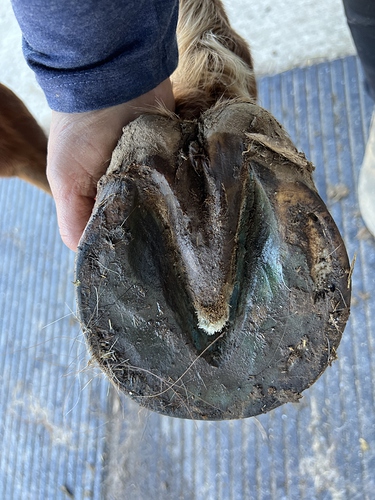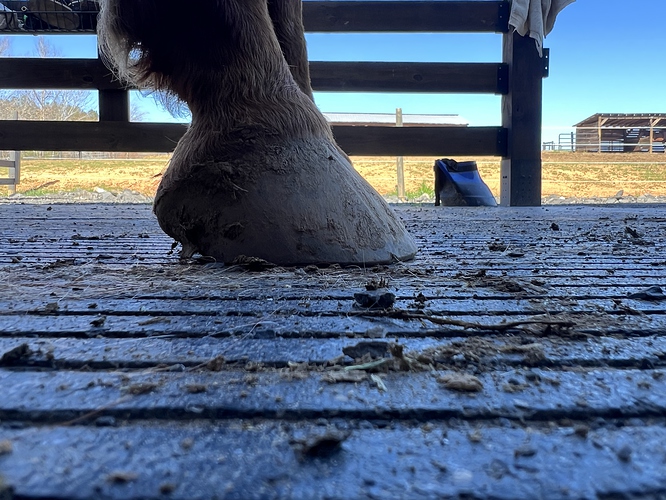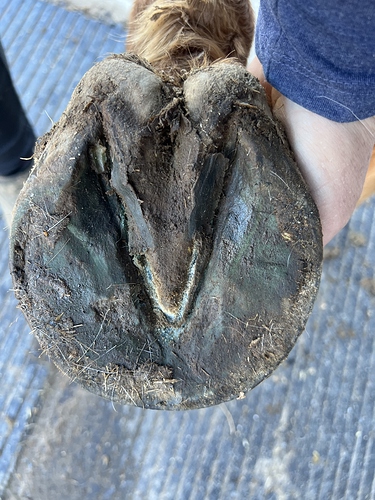I just pulled the shoes on my NQR gelding. I’ve been browsing a lot of hoof boot and barefoot groups and threads just to see if there’s anything I can do to help him be more comfortable (not barefoot, exactly, he’s no less sound now than he was in full pads and pour-in but his angles are SO bad). It seems that according to these groups, every horse has thrush and people are treating it for YEARS. It seems to be “treat the thrush first and then do diagnostics”, but to me not many people are ever done treating.
Is this Everything Is Thrush or Caused By It movement just because it’s a good starting point before digging deeper into soft tissue or navicular or whatever? Are the treatments just not particularly effective, since almost every comment is “keep treating thrush” or “been treating thrush for two years”? A lot of these people are keeping horses out 24/7 (mine included), is that causing thrush since the feet can’t dry out?
I’m not against treating the horse to see if it helps - but I’d have to pay my BO to do it, since I’m so far away. He is ouchy on his heels and they’re very crushed, so it’s a logical option, but it’s not something that feels like it should be a forever issue. What am I missing?






